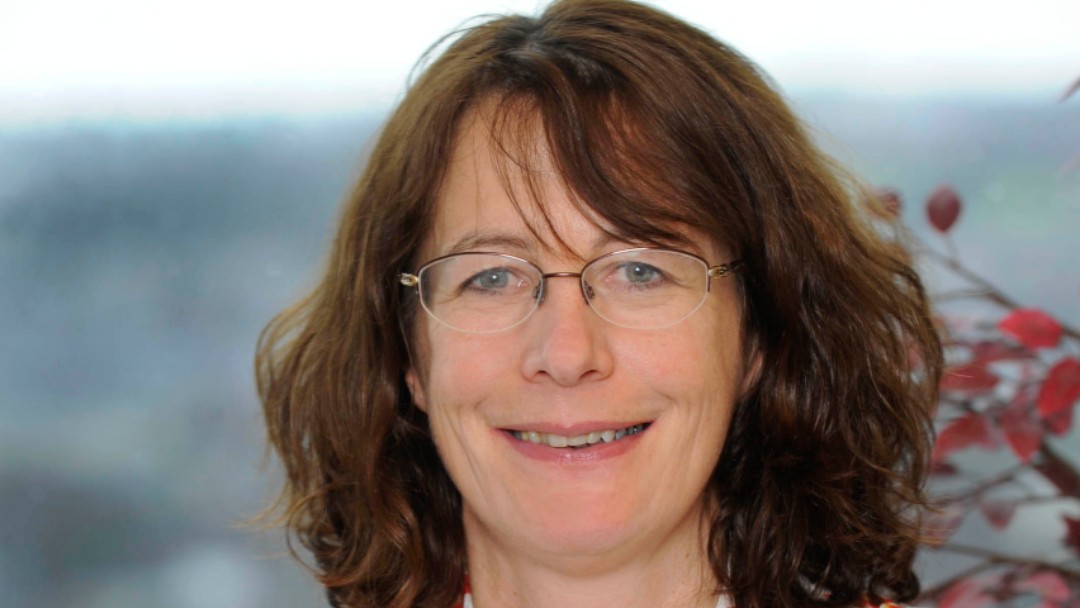When people are admitted to hospital, one of the first questions often asked is ‘when am I getting home?’.
Planned date of discharge (PDD) allows for that question to be answered. The key feature of PDD is multi-disciplinary teams of health and care professionals working together with hospital staff and looking at discharge planning with the patient and family as soon as possible. A PDD is identified at the earliest opportunity, sometimes on admission.
PDD has already reduced delayed discharges in South Lanarkshire Health and Social Care Partnership (HSCP) from one of the highest in the country – to one of the lowest. This approach is now being scaled up in NHS Lanarkshire’s three acute sites, in close partnership with Health and Social Care North Lanarkshire and partners.
In this special-issue podcast, Marianne Hayward, head of health and social care for South Lanarkshire HSCP explains what PDD is, how it works and the benefit for patients and staff alike.
Feedback
What did you think of this podcast? We’d be really keen to hear your views. Email euan.duguid@lanarkshire.scot.nhs.uk
Podcast Transcript
Ewan (E): Hello and welcome to a special edition podcast with Marianne Hayward. Marianne is head of health and social care for South Lanarkshire’s Health and Social Care Partnership and joins me to talk about a programme called planned date of discharge. Going into hospital for an operation or procedure can often feel like the beginning of a daunting and complicated journey, but well-established systems are in place to provide a clear route, with full support from a range of health and care professionals as well as partners. This spans from your arrival, to your time in hospital, to your discharge back home or to a community setting. I’m delighted to say that Marianne Hayward joins me down the line right now to talk us through this journey and the main principles of planned date of discharge. So Marianne, thanks a lot for coming on. To kick us off, would you be able to tell me what happens when a patient arrives in hospital?
Marianne (M): Well, the idea behind this principle, Ewan, is that people have a date for discharge as soon as possible when they’re admitted to hospital. If you ask anyone who goes through the hospital journey, the first question they always ask is ‘when am I going home?’. Planned date of discharge allows this to happen. So when someone’s admitted to hospital and haven’t gone through A&E, usually through acute receiving on to the ward of where they can be best cared for, the specialists and the staff and the social workers will be responsible for setting a date when that person can go home, and sharing that with the family, the person, as well as discussing it as part of their MDT (multi-disciplinary team). And then all the goals and requirements for getting that person home will be set and worked through with the patient.
E: What staff will be involved in the patient’s care?
M: It’s numerous people involved at every stage, depending on what’s required. We have patient advocates involved, social workers, home care staff, pharmacists, doctors, obviously, nursing staff, dietitians, speech and language therapists, physiotherapists. There’s a range of professionals who will make a judgement alongside the person’s needs as to when that discharge date can be achieved. Very often people need a period of not just getting medically stable, they require a period of rehabilitation and support for getting back on their feet. And the planned date of discharge would take all that into account. So whatever the person’s requirements are, they’re worked through and there will be a logical plan agreed with all these professionals for that person to get home.
E: And how long will this journey last for?
M: Well, it’s very unique to each person coming through the hospital and some people can be in for a significant length of time, but that doesn’t mean their discharge goals can’t be set quite far in advance. So we would hope that by now, after a year of doing planned date of discharge across the acute sites in Lanarkshire, we have a fairly good idea based on people’s medical history, their social history, their circumstances at home, when that discharge date should happen. So sometimes it can be a 24-hour turnaround, but equally, it could be two to three weeks – it may be even a bit longer for some specialties. For some of our mental health patients, when we’re looking at rehousing etc, it can take a few months in terms of stability, so it’s very individual to the person, but every effort is made to make sure it’s customised and the journey is applicable to that person as an individual.
E: And do you try and be as specific where you can?
M: Yeah, we try to be very, very specific, but we recognise – we’ve gone through a period of growth around this – we recognise that sometimes that can change and that we have to be responsive to that change. But we do try and give people an exact date and that actually helps the staff on both sides as well because they’re aiming for that date. So, for example, if somebody requires a homecare package to support them at home, we can work with the various providers for that package and make sure it’s lined up if we have a specific date. If a person requires long-term care, then we would work with the long-term care provider to make sure that person can be discharged on that date, so it’s not just about the patient. Although the patient is at the centre of the process, there’s a lot of people involved in making sure that specific date happens
E: But the planned date can change?
M: Yes, absolutely, and does. We try and bring the date forward as well, so if we set the date for a couple of weeks’ time and somebody becomes clinically well before that, we’ll move the date so that they go home earlier. So it can be quite flexible, but at the same time we try and not change it too often because that can be confusing for the patient and their carer and family and wherever they’re going in terms of a final destination. But we try and be as flexible around people’s clinical needs.
E: How will the patient know when they’re ready to go home?
M: Well, they’ll have achieved their goals. So if all goes well, and the multidisciplinary team has done its job at the beginning and set the date with the patient, they should know what they’ve got to achieve to get out. For those patients who are unable to make that decision, then advocacy and family and carers would be involved in helping them support that date. So the person has to be clinically ready, they have to be signed off by a registered medical officer and then the supports at home need to be in place. So as long as the person has met their minimum goals for achieving all that, then they can discharge.
E: And that will only happen when they are ready?
M: Yeah, that will only happen when they are clinically ready to go. Nobody would discharge anybody that was safe. It would have to be an agreed across the MDT that that was the case.
E: What should the patient do if they have concerns about being discharged?
M: The patient should be an active participant in the process and any concerns from family, carers and the patient themselves is taken into account when we’re having that conversation. Ultimately, everybody wants to go home, and that’s what we try and support as best as possible. Where that’s not possible, we work with a patient and their choice on what we call a co-production assessment for social work where the person has a say on how their discharge process will happen and where they’re going to go. Once that’s achieved, and the person’s choice and control is taken into account, they will be able to be discharged. So it happens all the way through the process, it’s not just at the end, or at the beginning, it happens all the way through the journey.
E: And when they’re in hospital, is there anything that the patient needs to do to get home?
M: Well, while they’re in hospital, the patient needs to concentrate on getting better, so whatever the clinical reason for them being admitted in the first place needs to be paramount. Achieving their minimum goals and working with the rehabilitation teams, making sure that all the information required to get them home is given to the staff that can help support them. But on the whole, it’s mainly about working alongside those goals so that we can get them home safely.
E: And what if all the patient’s treatment goes according to plan?
M: If everything goes to plan, then they will leave on their planned date of discharge – and that’s the ideal scenario. But it doesn’t often happen like that; you get small blips in the past where you have to change direction. Sometimes people need more equipment than you imagined at the beginning, sometimes they need more support to get through the journey. But if everything goes to plan, and ideally that would be the ultimate goal and people then leave on their preferred date.
E: How exactly do they get home?
M: Well, if people can go home by themselves or go with their family then we encourage them to do that, but if they can’t, we’ll arrange for transport to get them home, either by ambulance or by private ambulance, to make sure people are safe in that journey home. And that can be arranged by the discharge team and the multi-disciplinary team.
E: And what support will be available in the community for when they are discharged?
M: There’s a multitude of different types of supports for when people are at home, including access to general practice (GP) and the practice staff. But our social work teams, our ops teams in terms of home care, there is support from third sector and then there’s a multitude of befriending and support structures outside statutory services. Ultimately, what we deal with in the community in terms of statutory services, homecare and social work. Also there’s a multitude of other things that people can access and we have a library of those options for people once they’re discharged.
E: But not everyone will need support services on discharge, is that right?
M: That’s right. If people can go home with what they had when they came in, we’ll encourage them to do that and encourage them to be enabled at home with our community support rehabilitation enable teams who will come in to make sure that people are safe at home and can be rehabilitated back to their previous state before they went into hospital so it’s possible for people to go home with nothing, that’s right.
E: That’s perfect, Marianne, thanks a lot for talking me through planned date of discharge. I hope it was really helpful for our listeners and thank you for your time.
M: Thank you, Ewan.




